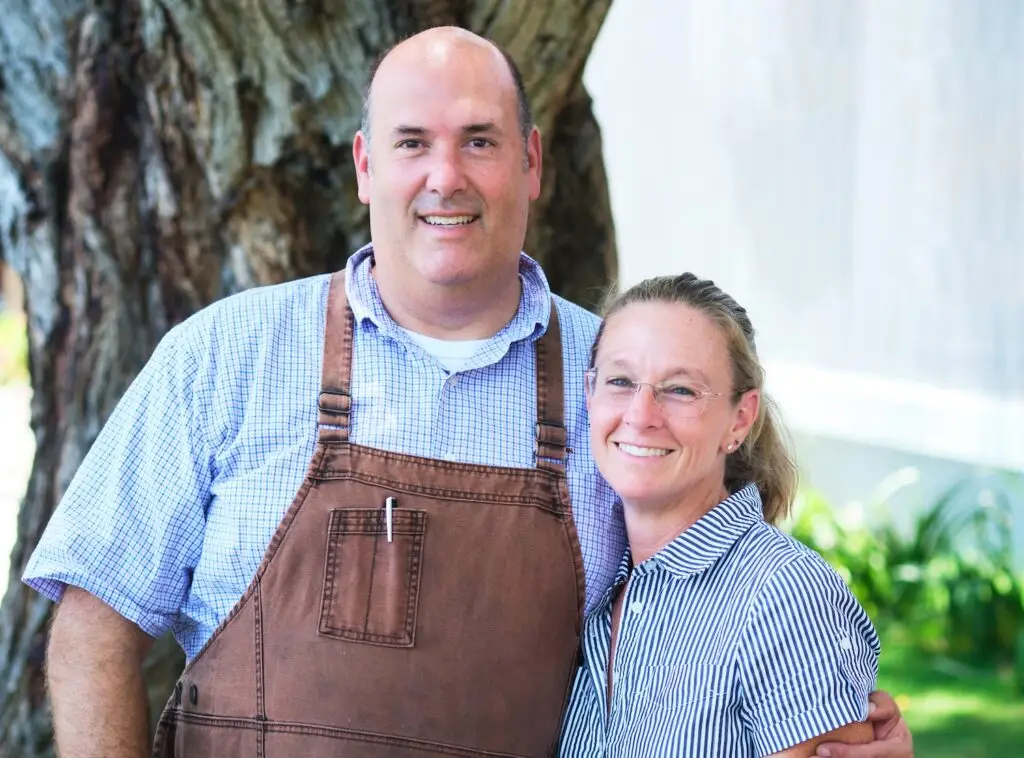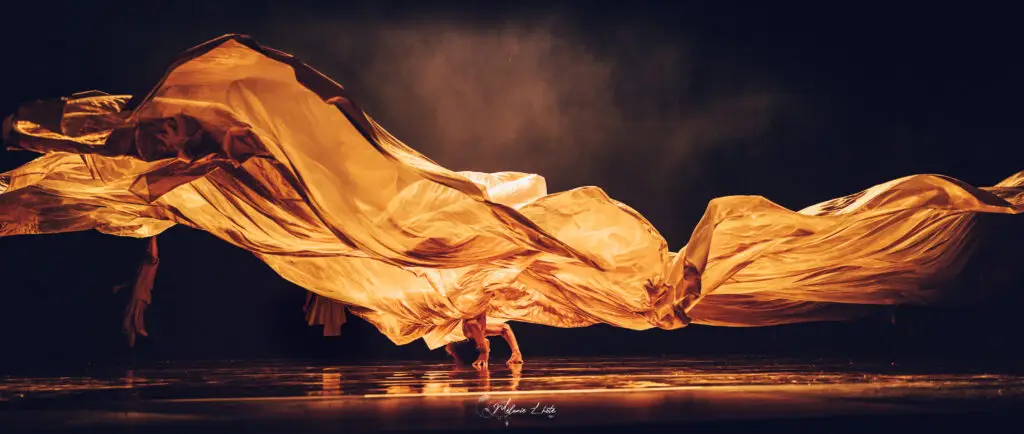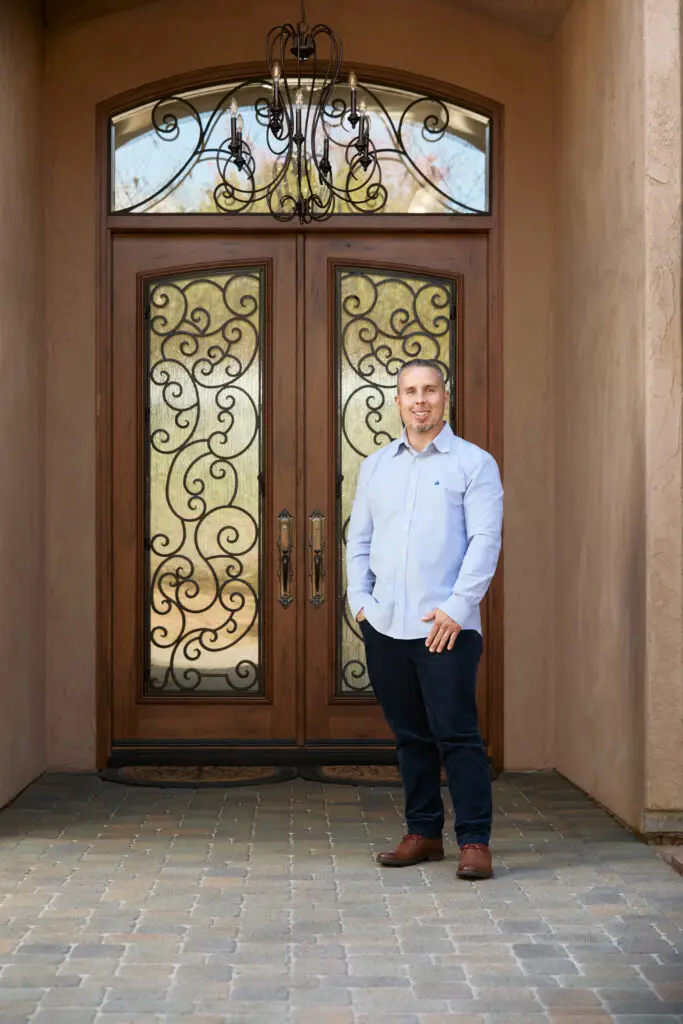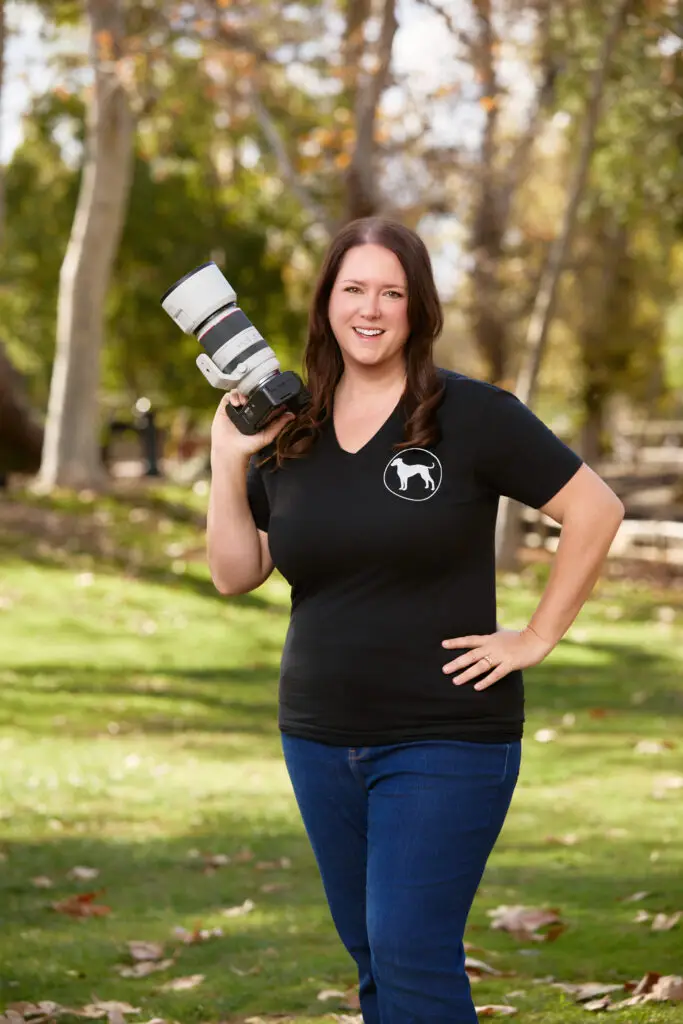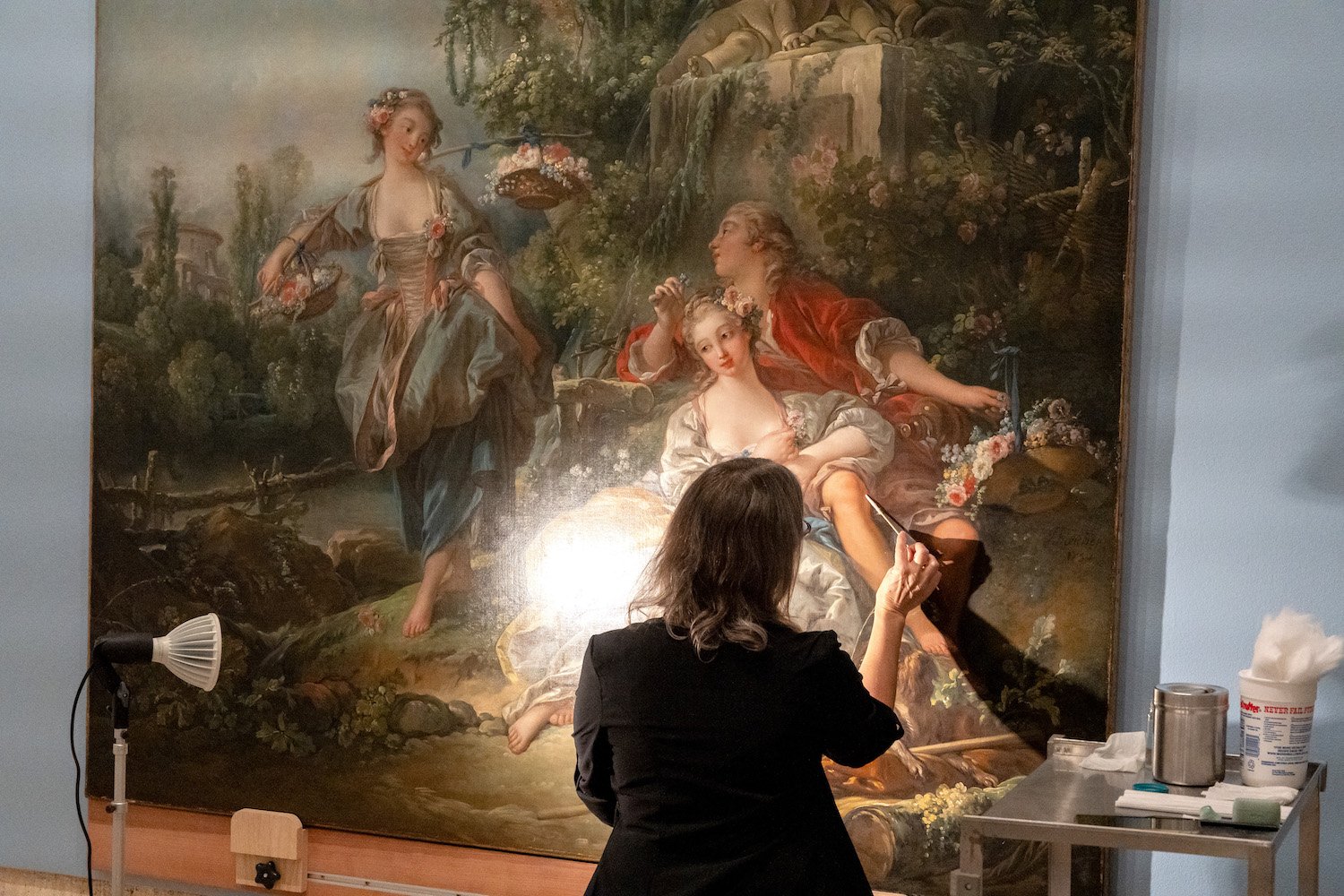In a gallery space in Balboa Park’s Timken Museum, a group of kindergarteners stares, riveted, at a dirty cotton swab. Paintings conservator Alexis Miller is showing them how one cleans a masterpiece—very carefully, basically, and very slowly. The painting she’s working on is more than 90 inches tall and 75 inches wide.
It’s likely these kids’ first brush with conservation. But they’re learning about the potential career much earlier than most.
“There’s very little public info [about it],” says Bianca Garcia, an associate conservator of paintings at the Balboa Art Conservation Center (BACC). She graduated from the University of Delaware’s conservation masters program, one of four in the US. “It’s not a traditional career path.”

Founded in 1975, BACC is among just nine art conservation nonprofits in the United States and the only on the West Coast. They serve museums, arts institutions, and private collectors in California and surrounding states. In April of this year, they received a $1 million grant from the Mellon Foundation, which will allow them to further expand their work and help increase access to the field of conservation.
The center’s staff members (who have different specializations, helping to maintain paintings, textiles, and other objects for future generations) usually do their delicate work tucked away in BACC’s lab spaces in the San Diego History Center. But, through late 2023 and early 2024, their team of paintings conservators is freshening up François Boucher’s 1758 work Lovers in a Park onsite at the Timken, giving visitors the opportunity to see the process happen live.
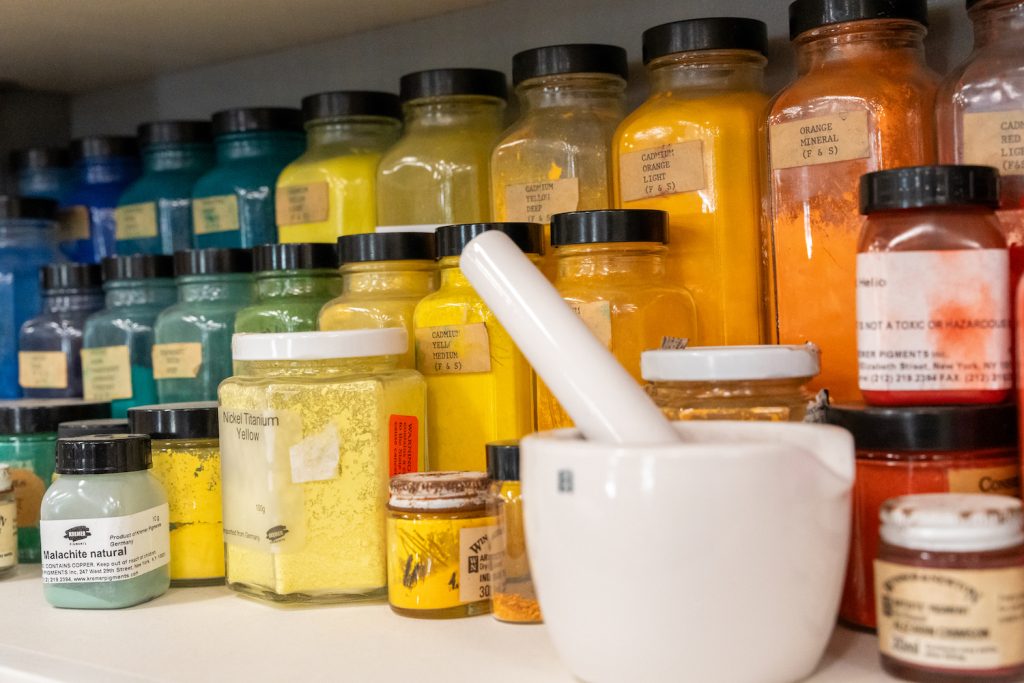
Conservators use BACC’s vast collection of pigments to create perfect color matches when restoring works of art.
In the meantime, BACC is using a portion of the Mellon grant funds to update their offices. While the nature of the job will always demand a certain degree of insularity, the facelift will allow them to bring in more tours, teaching visitors about the conservation process.
A major—and perhaps particularly overlooked—aspect of the work is consulting with arts institutions to ensure that objects are being stored and displayed in the right conditions. Conservators assess light, humidity, and other environmental elements and suggest adjustments. “It’s similar to preventative care,” Garcia says.
Sometimes, though, individual pieces need more hands-on TLC. Each of the center’s projects begins with a proposal detailing a plan for analysis, cleaning, and restoration and the approximate associated costs. That proposal has to be approved by the object’s owner before the conservators can move forward, in part because some steps do have the potential (however slim) to damage the object. “We want people to understand that there’s some risk,” says Annabelle Camp, a textile conservator and BACC’s marketing and development associate. “And, also, we want to keep a record for future conservators and historians.”
Once stakeholders sign off on the plan, the fun begins. Conservators can assess the condition of a painting, for example, using different techniques to study its various layers: infrared reflectology, ultraviolet light, x-radiography.
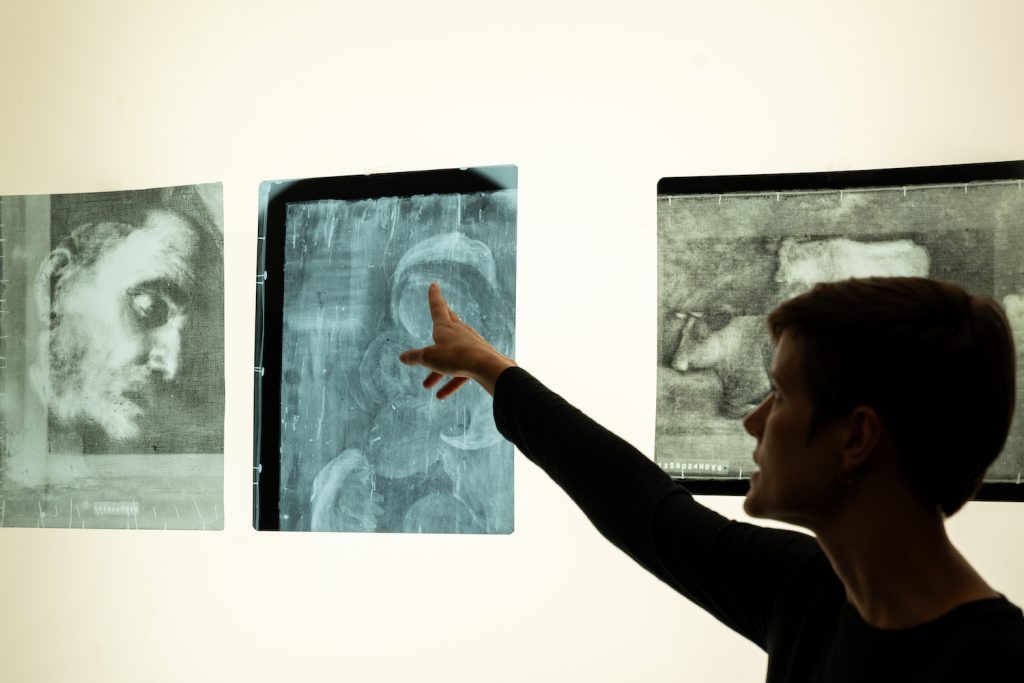
As sci-fi as it all sounds, Camp is the first to admit that some of their current technology is, by industry standards, kind of quaint. BACC’s senior technician, Erick Gude, still develops x-rays in an onsite dark room. A slice of the grant funds went toward a tech refresh. “If we have people coming here for apprenticeships and training, we want to train them on the most up-to-date tools,” Camp says.
That’s not to say, though, that their retro x-ray machine hasn’t served them well. In 1986, BACC analyzed a particularly strange painting from the San Diego Museum of Art’s collection, one that depicted the Biblical figure David staring at an empty space on the ground. An X-ray revealed the severed head of Goliath beside him, invisible to the naked eye.
“What probably happened was that a dealer decided it was too gory and painted over it,” Camp explains. “[Conservators at BACC] were able to remove that paint and reveal the original painting.”
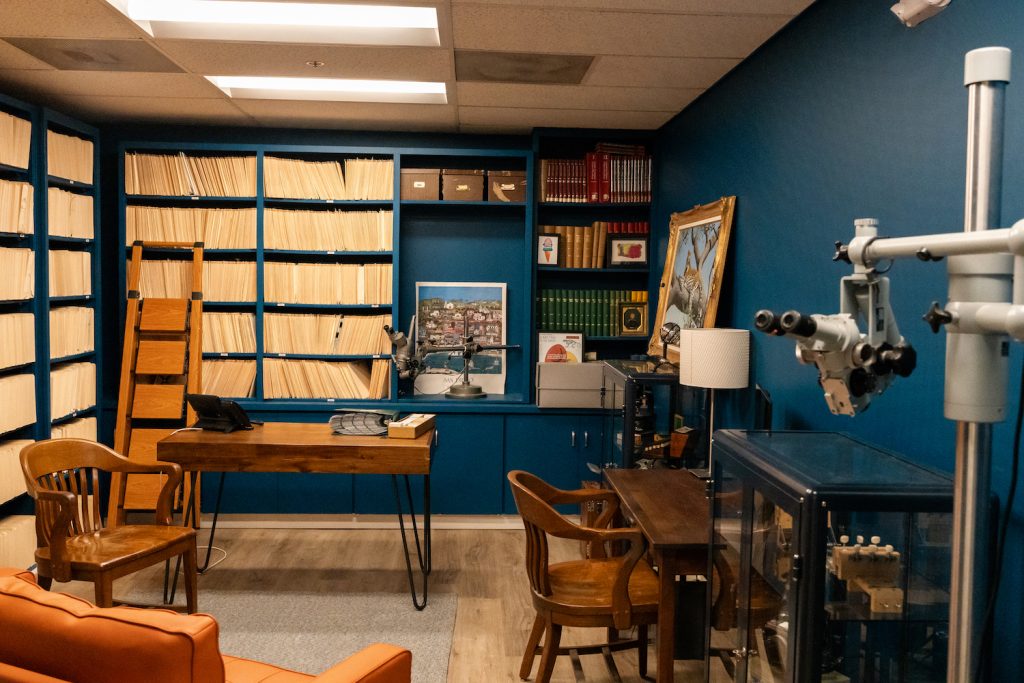
The team wouldn’t have been able to restore the 17th-century piece without vast interdisciplinary knowledge. Conservation is literally both an art and a science—in addition to having training in research and art history and the practical art skills required to fill in areas of paint loss, for instance, conservators must be careful chemists, understanding how paints, varnishes, and other materials interact and evolve over time.
PARTNER CONTENT
“We want [the changes we make] to be reversible, so we have to know the material we’re working with, as well as the material we’re applying,” Camp says.
That’s the great irony of conservation: In order to help pieces last forever, conservators have to be comfortable with the idea of their own work being only an ephemeral moment in the object’s history. They maintain detailed files, daub on easily soluble paints, ensuring that, someday, the next conservator—maybe one of those 5-year-olds at the Timken—can wipe it all away and start again.
